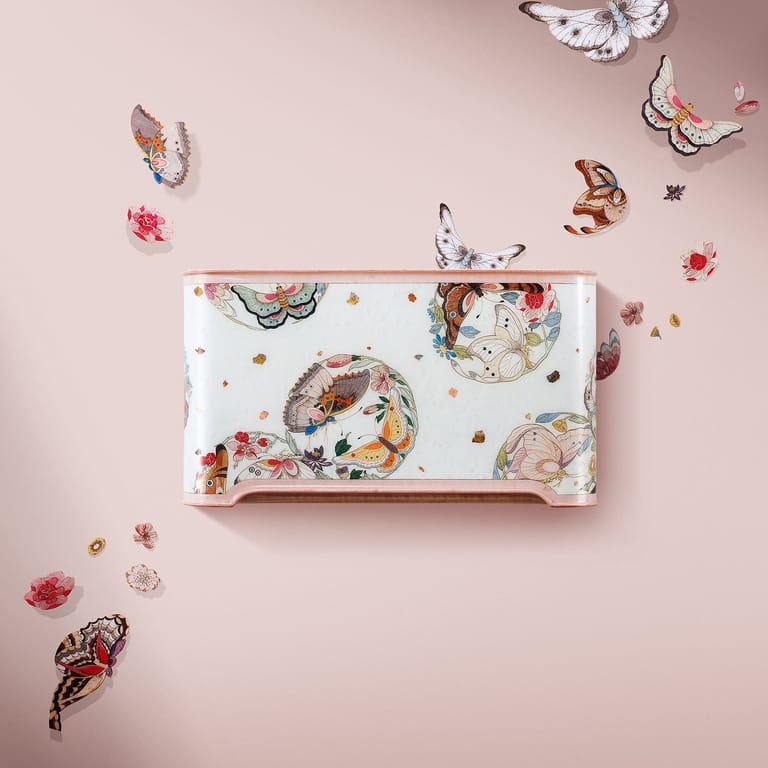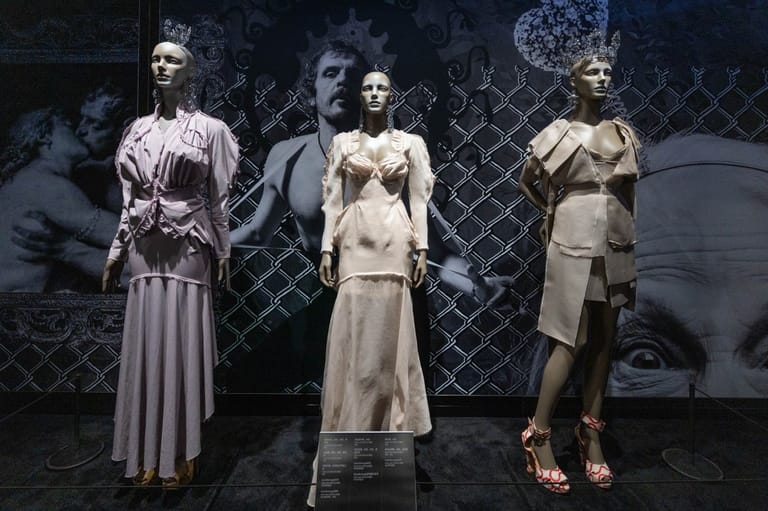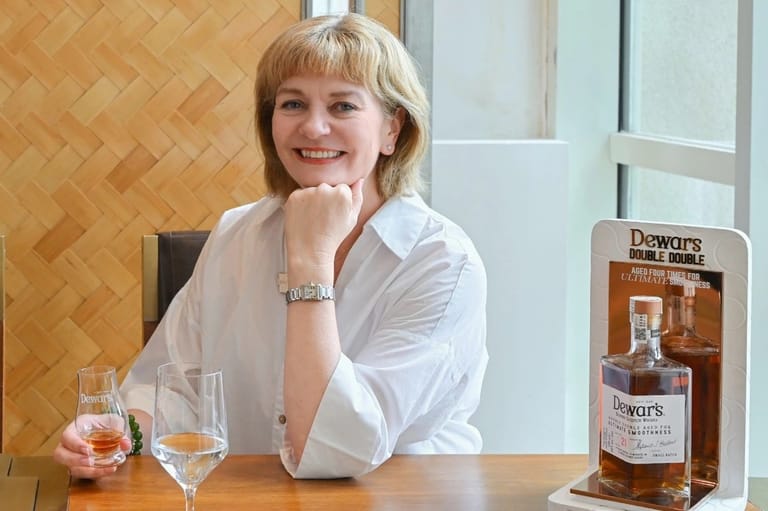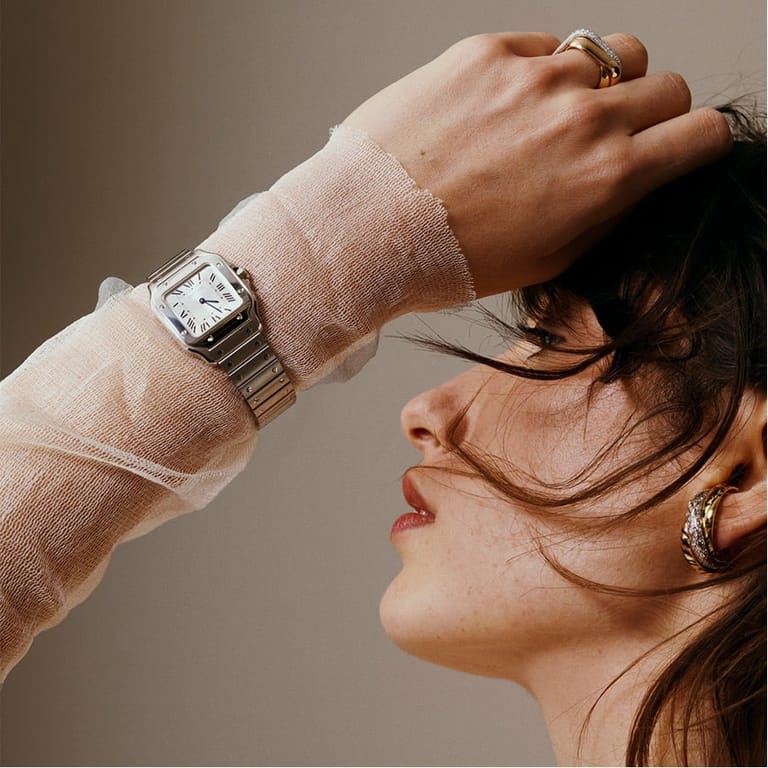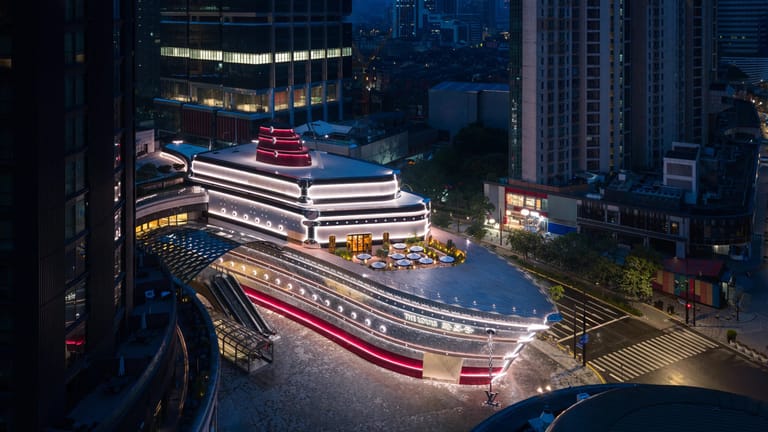The Tech-Infused Future of Luxury Packaging
By
Huiyan Chen

Published on
April 15, 2025

As technology continues to redefine the boundaries of the luxury industry, packaging—often the consumer’s first point of contact with a product—is fast becoming a key focus of innovation.
On April 10, a roundtable titled “Packaging at the Cutting Edge: How Technology is Reshaping Innovation and Consumer Experience in Luxury” took place during Luxe Pack Shanghai. Moderated by Calvin Liu, Chief Strategy Officer at Jingzhi Media Group, the panel featured Jiang Guozheng, founder of NX Brand Consulting; David Xi, General Manager of packaging firm Nextidea Packaging; and Matt Ma, Co-Founder and CEO of Neon Echo. The discussion unpacked how brands can apply technology in packaging without compromising their identity or luxury’s intrinsic values.
Tech as a Brand Expression—Or Not
Within the luxury sector, whether to embrace technology remains a divisive question.
“There are two opposing attitudes toward technology,” said Ma Jun. “One side believes it must be embraced to stay relevant. The other sees it as a betrayal—an erosion of traditional craftsmanship that may dilute brand value.”
For Jiang, the answer lies in brand intent. “Technology is an external expression of a brand,” he noted. “Whether and to what extent it’s adopted should be determined by the brand’s core DNA.”
Brands that embed “tech-forward” as a core identity must rethink everything—from design language to production processes. “Even if the technology isn’t mature,” Jiang explained, “such brands will find ways to express that language at every touchpoint to ensure the consumer feels it.” However, he cautioned that innovation comes with risk. Even minor material adjustments can destabilize a product system, requiring patience, investment, and a thorough assessment of internal and external conditions before execution.

By contrast, for brands anchored in values like nature, heritage, or tactility, technology can be applied in subtle, behind-the-scenes ways. He cited a haircare brand that used micro-perforated packaging to allow the product to ‘breathe,’ enhancing biodegradability—without any overt mention of technology in its branding.
Ma, whose experience spans multiple industries, emphasized that the role of technology varies across categories. In automotive, technology is about function. In fragrance, it’s about emotion. “A friend once asked me to recreate the scent of a freshly sun-dried winter blanket,” he shared. “That smell likely comes from residual jasmine or lavender in laundry detergent, layered with the woody notes of sun exposure.” Thanks to advances in molecular technology, such sensory memories can now be rendered tangible.

Balancing Sustainability With a Sense of Luxury
Technology is also instrumental in driving sustainable packaging—a goal that has become non-negotiable for the luxury industry.
Ma is wary of making technology a central pillar of luxury storytelling. Instead, he believes its real value lies in enhancing sustainable practices with greater efficiency and accessibility. He pointed to the example of elaborate holiday gift boxes. “Consumers often feel conflicted,” he said. “The packaging is beautiful, but once the mooncakes or zongzi are gone, the box feels wasteful.” Innovations in naturally degradable materials, Ma argued, can ease that guilt. “High-degradability materials empower consumers to dispose of packaging guilt-free.”
Xi Dawei echoed this sentiment. “Luxury is a lifestyle, and sustainability is about elevating future living standards,” he said. With minimalism now a design trend across premium categories, sustainable practices and high-end aesthetics are no longer at odds. “Quality materials and environmental responsibility can co-exist.”

Jiang agreed, adding that sustainability—as a shared cultural value—can and should be embedded into the luxury experience. He shared an example from the brand Beast East, which uses a dual-structure for its skincare packaging: a recyclable, minimalist inner pod designed for frequent replacement, and an outer shell made from long-lasting materials like marble or ceramic. “This format delivers on sustainability without sacrificing tactile and visual indulgence,” he said.
Culture Shapes How Packaging Is Perceived
As the roundtable drew to a close, panelists explored how lifestyle and cultural values influence packaging expectations in different markets.
Xi, an early advocate of single-dose packaging formats in China, pointed out that such formats are popular domestically but often viewed as wasteful abroad. “It reflects a difference in habits,” he explained. “Chinese consumers prioritize freshness and immediacy—just like how we shop daily for produce. Americans, by contrast, are used to weekly grocery hauls.” As a result, what’s seen as hygienic and convenient in China may be criticized as excessive elsewhere.
Ma added that perceptions of “naturalness” also diverge. “Overseas consumers often value materials that feel close to nature—think moss, bark, raw textures,” he said. “But Chinese consumers emphasize craftsmanship and refinement. They want to feel the value added through precision and aesthetic sophistication.”
In short, cultural context and consumer expectations must inform packaging innovation. For luxury brands operating across borders, that means strategically localizing packaging language, material choices, and even the visibility of tech itself.
For an industry built on perception and emotion, packaging in luxury is more than a vessel—it’s a storytelling device. As technology evolves, the challenge isn’t whether to use it, but how visible it should be, and whether it aligns with brand identity and consumer psychology. In a marketplace where both values and value matter, mastering that balance may be luxury’s next frontier.




